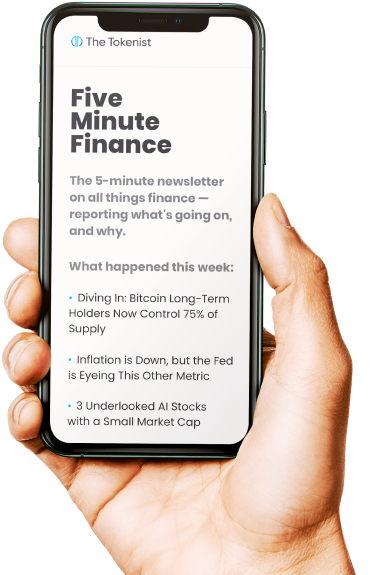
Banks Raise $34 Billion to Comply with SEC Rule, Effective Today
Having the collateral to cover stock trading is important to oil the market cogs. With margin trading, it is critical, a lesson learned the hard way from “Bill” Hwang last month. From today, the SEC will decide which brokerages failed to cover their securities trading, and what punishments it will dish out.
What is SEC Rule 15c3-3?
Even free market absolutists understand that rules of the playing field have to be followed to maintain the ecosystem. The U.S. Securities and Exchange Commission (SEC) is the final arbiter in this arena. Although this regulatory agency too suffers from the “revolving door” syndrome, on paper, the SEC is in charge of ensuring market participants play fairly.
While not a legislative body, the SEC’s interpretation of the existing securities laws in the form of issued rules do have the same heft. One of those rules had been issued in 1972 (amended multiple times since) – Rule 15c3-3 – also commonly called the Customer Protection Rule as a part of the Code of Federal Regulations.
Here are its main highlights:
- It regulates the funds in the custody of both client-owned securities and those held by brokerages.
- It requires brokerages to have physical holdings of clients’ securities, which can be stored in their own location or at SEC-approved securities repositories.
- It demands brokerages to separate clients’ cash from their own, meaning that brokerages can only use customer cash for the purpose of facilitating their trading.
- It requires brokerages to maintain a daily record of clients’ trading – what is loaned and borrowed between each party.
- Most importantly, it requires brokerages to compensate for the shortage of shares with additional securities to be acquired within a few days, effectively requiring brokers to have collaterals for the benefit of their customers.
- It applies to all registered brokerages.
In a nutshell, Rule 15c3-3 protects traders by ensuring that all regulated stock trading platforms keep their funds secure and segregated, while compensating for any shortfalls. This way, traders are able to withdraw their asset as they deem fit.
Why Was Rule 15c3-3 Enacted?
If you are to assume that it would be exceedingly difficult to trade in a non-digital era, you would be correct. In the period between 1967 and 1970, Wall Street was struck by the Paperwork Crisis. In that pre-computer era, trades were conducted as primitively as you would expect – by paper slips managed by human messengers.
Inevitably, this process became untenable as the trade volume grew. By 1968, when the trading volume rose to daily 13 million stock shares, the entire paperwork process was overwhelmed. This resulted in total chaos – Wall Street firms going bankrupt, organized crime pilfering about $400 million in securities, and clients suffering countless losses.
Rule 15c3-3 was soon after put in place to minimize the risk of an occurrence of such crisis. It effectively transitioned the world of finance to the digital era by requiring that same standards be applied to digital assets as would be to physical, paper-based securities.
Why Are We Even Talking About Rule 15c3-3 Now?
On October 22, 2020, the SEC issued a statement that some brokerages are not 100% compliant with Rule 15c3-3(b)(3). Meaning, they do not provide sufficient collateral that secures loans in their entirety. However, it’s important to note that the statement did not “express any legal conclusions” on the matter.
As one would expect, the purpose of that statement is to urge compliance, i.e., give the entities it applies to enough time to comply without upsetting the market. Effectively, from October 22, brokerages were given a grace period to make sure everything is in order.
As you can see from that statement six months ago, that grace period ends today, on April 22nd, 2021.
“Consequently, the Division staff will not recommend enforcement action to the Commission if a broker-dealer operating a FPL Program that does not comply with Rule 15c3-3 for the reasons discussed below comes into compliance with the rule as soon as practicable but no later than six months from the date of this letter: April 22, 2021.”
The full-effect however, remains blurry. As later clarified by the Division of Trading and Markets Staff on April 16th, 2021, the statement was not a rule or a regulation, but a no-action letter.
“This statement, like all staff statements, has no legal force or effect: it does not alter or amend applicable law, and it creates no new or additional obligations for any person.”
As the ripples made throughout the financial system by Hwang’s disastrous leveraged bets – margin trading – are still felt, you can see why such a grace period was necessary. Consequently, we have seen a spree of bond selling among the largest banks for the past week:
- Bank of America sold $15 billion worth of bonds.
- JP Morgan sold $13 billion worth of bonds.
- Goldman Sachs sold $6 billion worth of bonds.
In addition to America’s largest banks selling $34 billion worth of bonds to raise cash, the Treasury General Account (TGA) is also draining in concordance.

After all, because the Federal Reserve debits the TGA and credits the commercial banks, the latter have to increase their reserves as the TGA decreases its funds.
Are you worried that increased liquidity will lead to negative interest rates, as we have seen in other nations? Let us know in the comments below.




